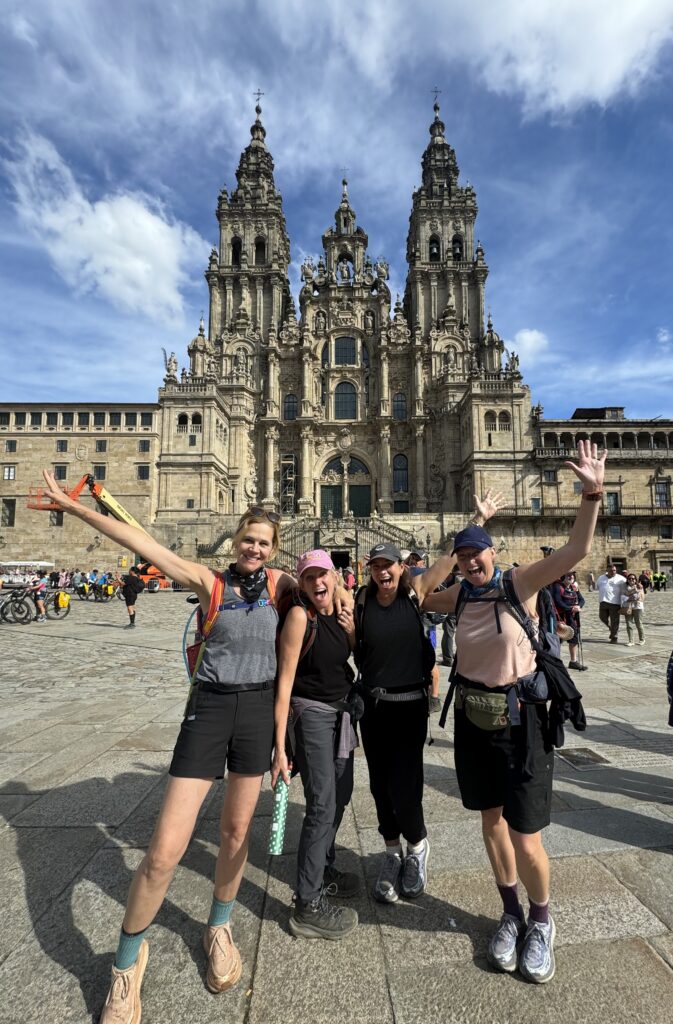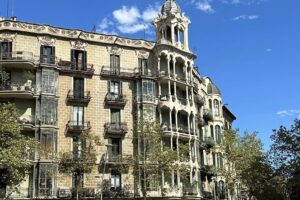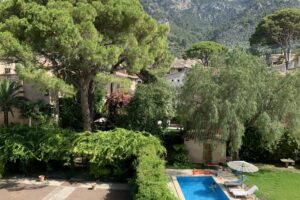Guest Post by Erica Alioto
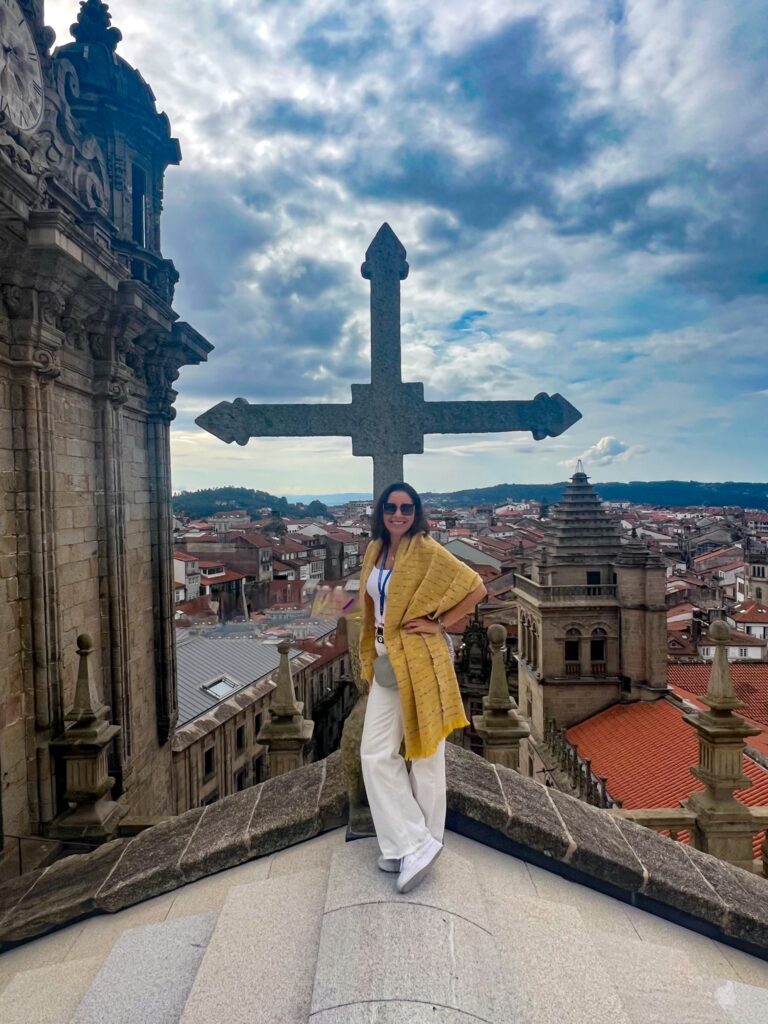
Meet Erica Alioto
Erica Alioto is a former attorney and startup executive who lives in San Francisco with her husband, 2 children and their Portuguese Water Dog, Bochy. She currently spends her time coaching executives, investing in and advising startups, and loves hiking, swimming, yoga and meditation. She studied abroad in Madrid, Spain during college and speaks fluent Spanish and is currently learning Italian.
Q: Where is your favorite place in the world to travel to?
A: That’s a tough question. There are so many incredible places, but I do find myself going back to Europe often. There’s so much to explore there, and it feels very accessible for kids. We love Italy, France and Spain, and have spent a lot of time traveling both in the larger cities and smaller towns in those countries. One of my favorite trips was when our son was 1 ½ years old, and we drove down the coast of Italy from Rome, stopping in a lot of beautiful spots along the way, and then took the ferry to Sicily and drove around the entire island. We spent a week in Taormina, which I find to be one of the most incredible places I’ve ever visited. This was 15 years ago, well before it was popular with many American tourists. Our final stop on that trip was to a small fishing village called St. Elia, where my husband’s family is from. We had the chance to have lunch with many extended family members at the family’s restaurant in town, which was a special experience.
Q: What are your top travel hacks or tips?
A: I love food, and I hate missing an opportunity to have a great meal, so I spend a lot of time researching the best restaurants, bakeries, etc. in each place I visit. I use sites like Yelp and Tripadvisor, and I will also ask the people at the hotel for their favorite places. A lot of the best spots I’ve been to have been small, family-run, no frills restaurants where an elderly grandmother is just hanging out in the kitchen making authentic local dishes.
Q&A GUEST POST: Hiking the Camino de Santigo 🥾
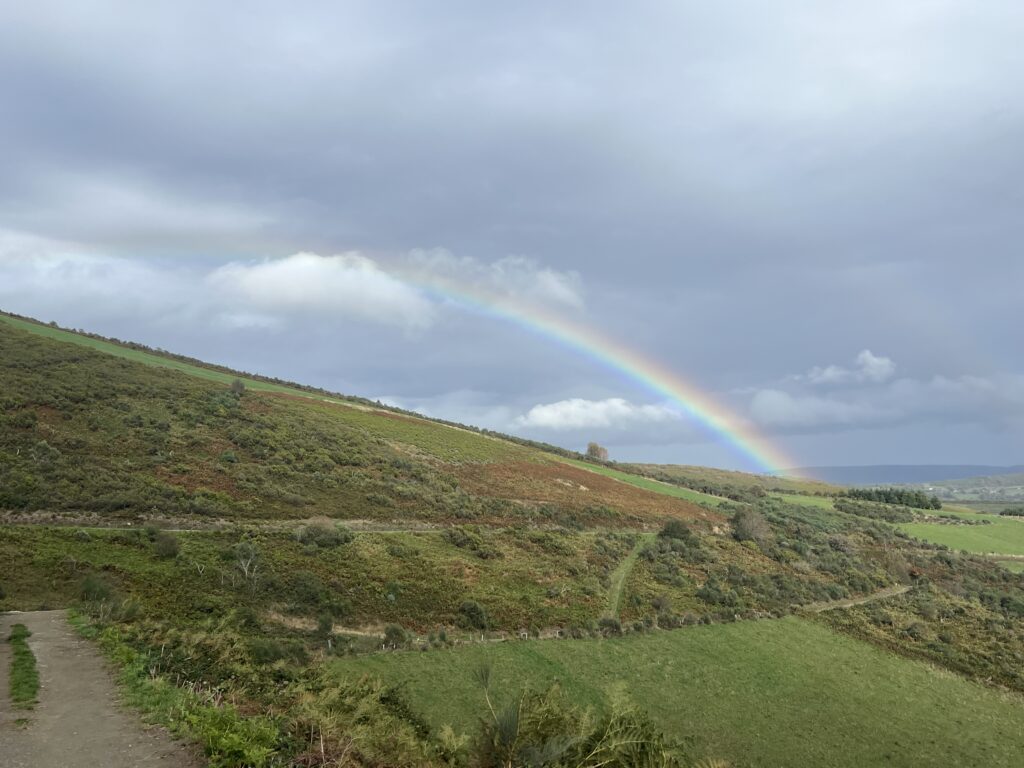
Q: What inspired you to hike the Camino de Santiago? Who did you do the hike with?
A: I have wanted to hike the Camino since I learned about it while I was studying in Spain (in 1996-97). It sounded like a unique way to experience Spain, and also enjoy some time for self-reflection. I hiked it with 3 of my closest friends, who all are moms I met through my kids’ school.
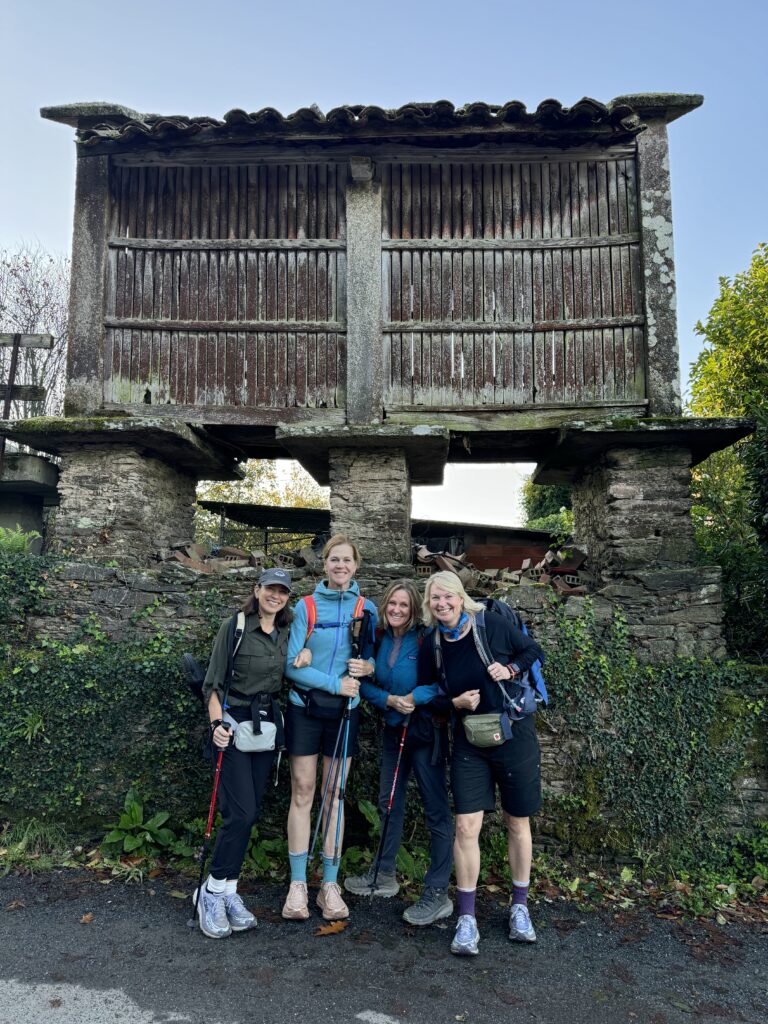
Q: Can you provide a brief overview and history about the Camino de Santiago?
A: The Camino de Santiago is a pilgrimage route that leads to the tomb where Saint James the Great is believed to be buried, in the Cathedral of Santiago de Compostela. Beginning in the 9th century, pilgrims began to walk the Camino in search of healing and forgiveness, which they believed they would find by visiting St. James’ tomb in Santiago de Compostela. Since it was named an UNESCO world heritage site in 1985, the popularity of the Camino has increased, with over 400,000 people reported to have walked the Camino in 2023. While it was originally a religious pilgrimage, people these days walk the Camino for many different reasons, including health, adventure, community, spiritual enlightenment and self-reflection.
Q: Where does it span from? How many total miles in the Camino?
A: There are actually 7 “Caminos” that lead to Santiago de Compostela. We chose to hike the Camino Frances, which is the most popular route and begins in St. Jean-Pied-de-Port, France. It spans 772 kilometers (480 miles), crossing the Pyrenees and then continuing across Northern Spain.
Because we all had kids at home, we weren’t able to hike the entire Camino, so we did the last 150 miles, starting in a town called Ponferrada, Spain.
Q: How long does it take to hike the entire Camino?
A: That depends on your pace. Most people we spoke with who hiked the entire Camino spend 30-40 days hiking. However, some people choose to take more days off from hiking to let their bodies rest, or break up the days into smaller chunks. For us, it took 9 days to hike 150 miles, so we were hiking between 15-20 miles per day.
Q: What’s the best time of year to hike the Camino?
A: April through October are the most popular months, due to weather. November through March are quite cold and rainy. We hiked the first 2 weeks of October and had a lot of rain, but the temperature was very manageable at 65-70 degrees most days. The months of June-August are warmer and drier but can be quite crowded. We preferred the cooler weather and less crowded trail in October. And while we had a lot (A LOT!) of rain and wind most of the days, we found it made us feel more resilient and accomplished at the end of those days, and made us appreciate the clear, sunny days even more.
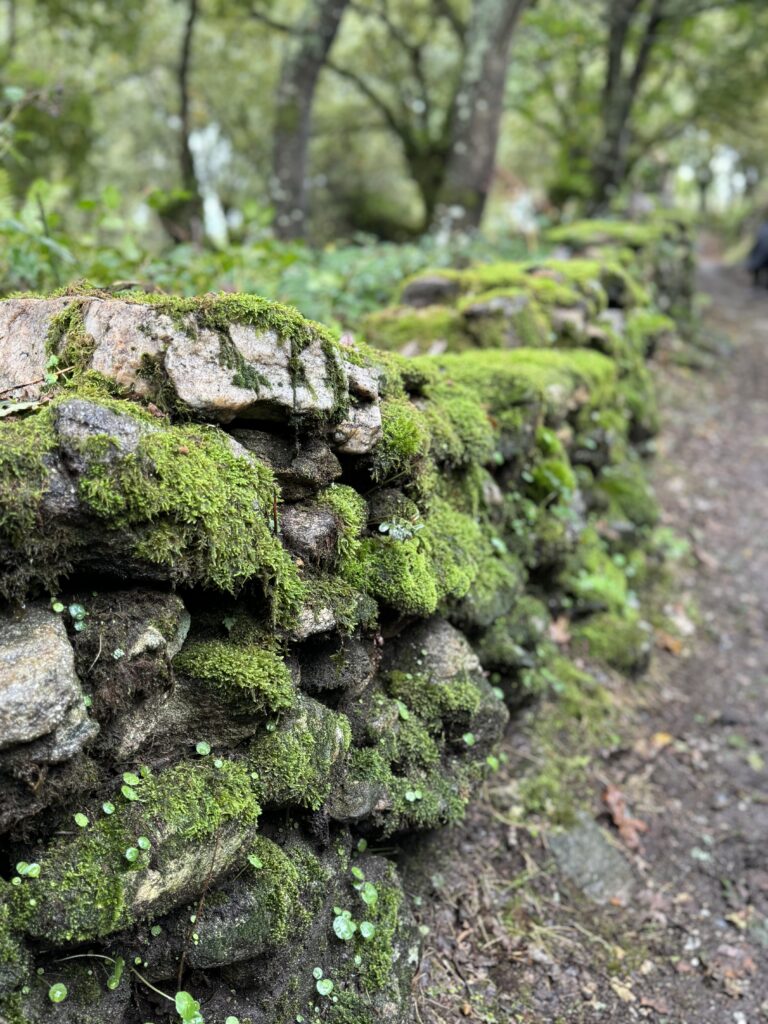
Q: What airport(s) do you recommend flying in/out of to hike the Camino?
A: It depends on which Camino you choose to hike, but we flew into Madrid (we had some friends we wanted to visit there) and then took a train to Ponferrada, which took about 4 hours. But if you’re starting from the beginning of the Camino Frances, the closest airports are Biarritz and San Sebastian. If you’re only hiking the last few stages of the Camino Frances, you may want to fly into Santiago de Compostela and take a train to your starting point. And for those hiking the Camino Portugues, Lisbon or Porto will be the closest airport.
Q: What is the terrain like along the Camino?
A: It ranges from paved roads to small dirt or rocky trails that go across mountains. It leads through small villages (some of which are almost vacant, except for a cafe for pilgrims or a few lone residents) across mountaintops with gorgeous views, through beautiful, lush forests, and through larger towns where pilgrims can stop to stay for the night and find a number of great dining options.
Q: Do you need a permit to hike the Camino?
A: No, you don’t need a permit. But I recommend registering in advance with the Oficina del Peregrino (https://oficinadelperegrino.com/en/). This will ensure there is a certificate of completion (credential) waiting for you when you arrive in Santiago. Anyone walking the Camino should also obtain a Camino passport (which you can easily find online for $3-$5). The passport allows you to collect stamps at hotels, cafes, churches, etc. along the way, and serves as evidence that you walked the Camino.
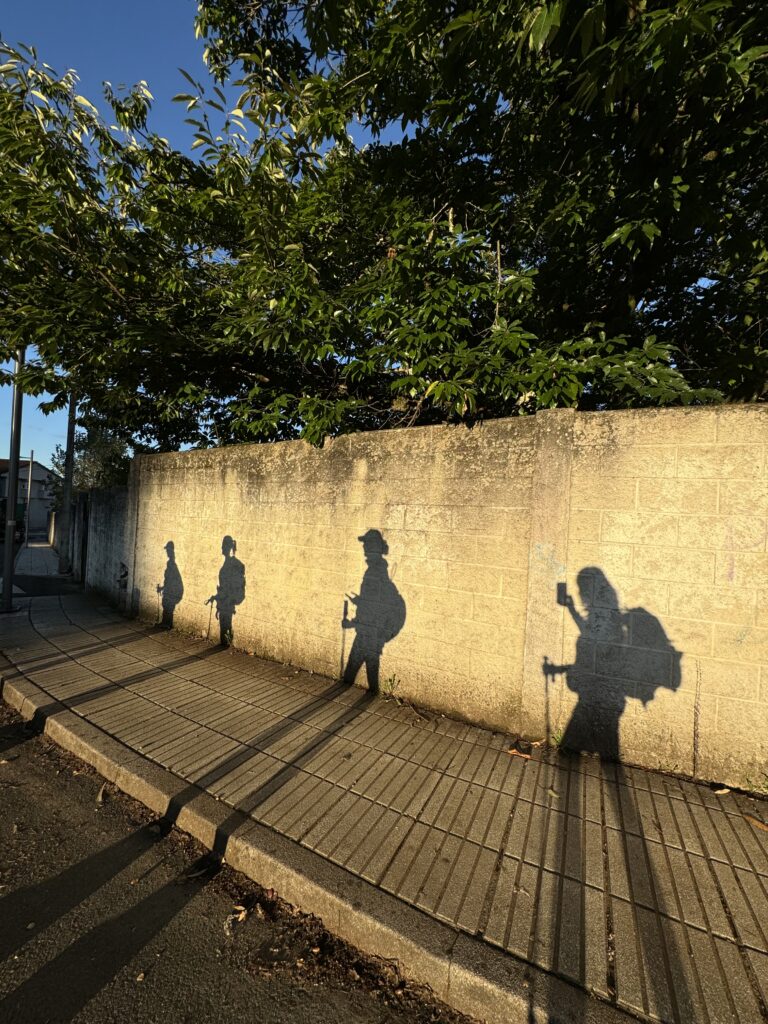
Q: Do you need cash when hiking the Camino? Or do places accept credit cards?
A: It’s always good to have some cash available for coffees, small purchases, etc. However, most establishments accept credit cards (though many of them do NOT accept American Express, so bring a Visa or Mastercard).
Q: Can you do a portion of the Camino? If so, what route did you take? How long did it take?
A: Yes! You can do any portion you want. The last 100km leading to Santiago is the most popular, because that is the minimum distance required to receive your official credential showing that you hiked the Camino. However, that portion of the Camino is the most crowded. We enjoyed the first few days when there were fewer people on the trail, the towns were smaller, and it was easy to get to know all of the other pilgrims who were walking (people on the Camino tend to be very open so it’s common to meet and even walk with others for portions of it).
We started in Ponferrada and hiked 150 miles, which took us 9 days. Some of the days were very challenging (18 miles with ~3000 ft of elevation) so some people may choose to break some of the longer days up into two shorter days.
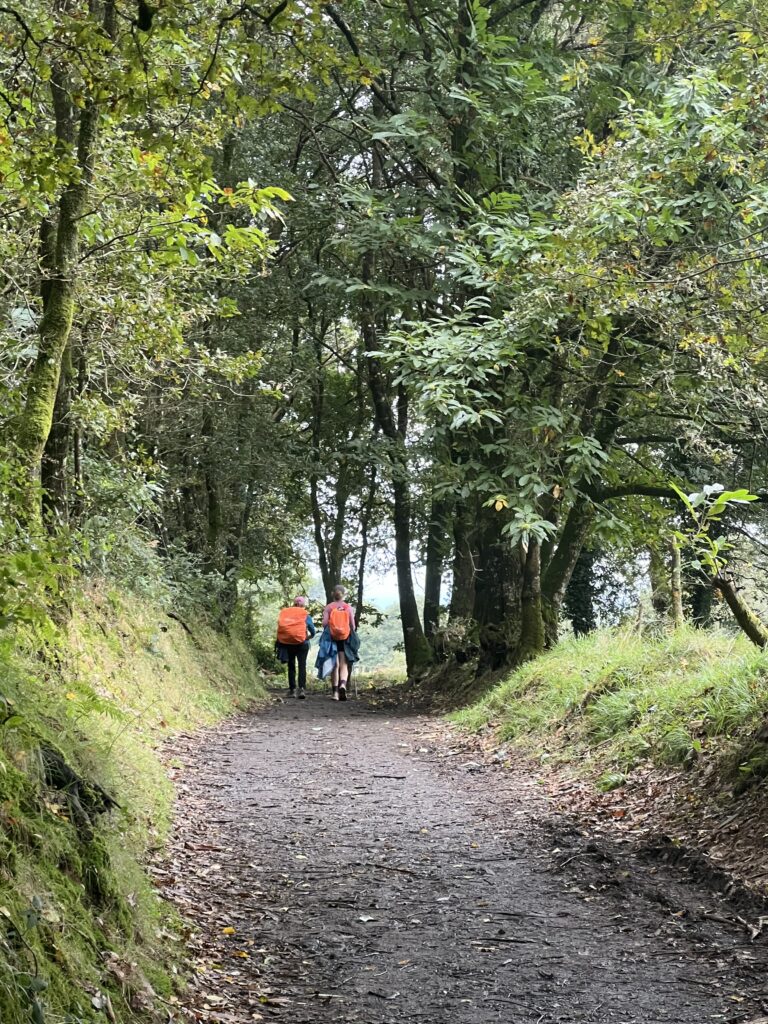
Q: How safe is it to walk the Camino? Is it safe to do it alone? Or best to do with a friend or group of friends?
A: We found our experience to be incredibly safe. We never had a feeling of unease. At least on the Camino Frances, there were always plenty of other pilgrims on the trail. We met families who were hiking it together, groups of friends hiking together, and plenty of solo hikers (including women hiking the entire trail alone). The only incident we heard about was a pilgrim that came across a large wolf in the wild who appeared to want to play. He was able to scare him off by making loud noises and was fine, but having seen the video I can assure you I wouldn’t have wanted to be in his position.
The other safety issue that can come up is weather. Certain parts of the Camino can be more dangerous in rainy or snowy weather.

Q: What did you do to prepare for hiking the Camino?
A: I walked and hiked quite a bit. Usually 5-6 miles each day with one or two 8-10 mile hikes per week, for about 3 months. However, some of the women we were with did much less and were totally fine.
Q: Where do you stay along the Camino? Do you need to bring a sleeping bag?
A: There are many options for where to stay on the Camino, ranging from hostels to churches and monasteries, to guest houses (albergues) and hotels. We chose to stay in hotels, so we did not bring a sleeping bag, though you may need one if you choose to stay in hostels or churches. Some of the places we stayed were pretty basic, no-frills places, while others were spectacular. One standout is Pazo de Andeade, a villa built in 1764. The villa has remained in the same family for hundreds of years and is now a boutique “rural hotel” run by a woman whose family owns it. The hotel offers beautiful grounds, historic decor and delicious food. We also discovered they serve very large and strong gin and tonics, which was the perfect refreshment after a long day of hiking.
We used a tour company called Tee Travel that helped book our accommodations for each evening and and transfer our luggage from one hotel to the next, so we only had to carry our day packs along the trail. This service was very helpful and quite economical.
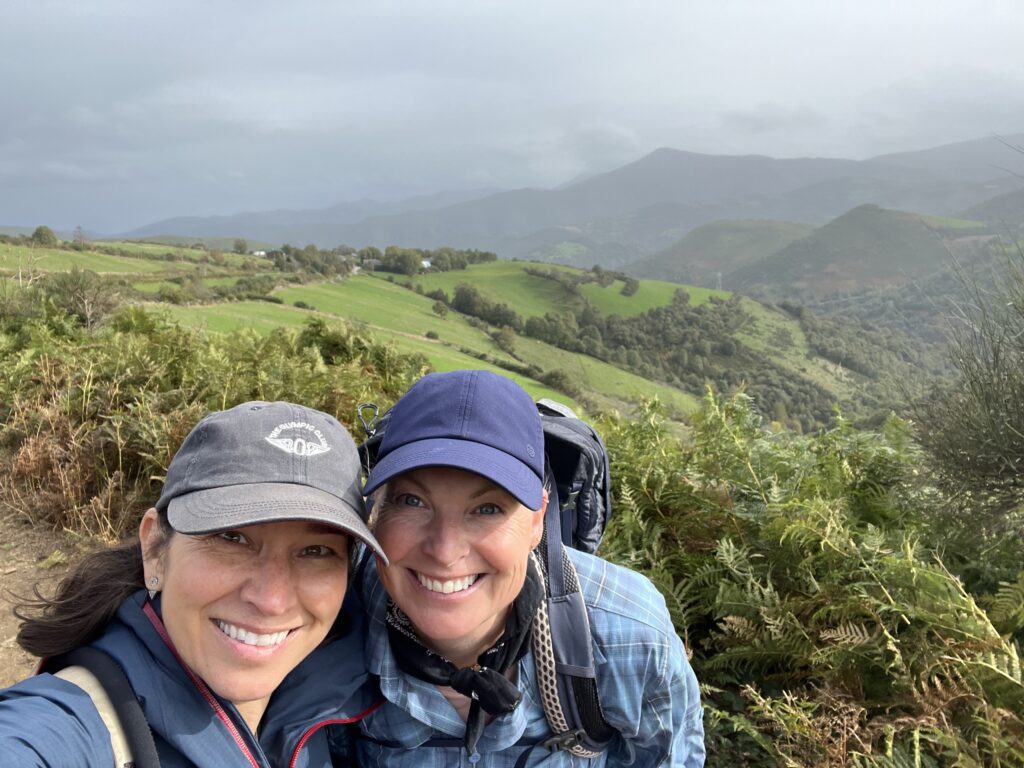
Q: Let’s talk gear! What are your top recommendations for essential gear to bring to hike the Camino?
A: Good walking shoes and socks are key. Most of us went with the Hoka Stinson shoes and Darn Tough merino wool socks and Injiji sock liners (we doubled up on socks to avoid blisters). I also recommend bringing a pair of “recovery” shoes to wear in the evenings (we all loved the Oofos Ooahh slides but Tevas or Birkenstocks also work well.) Good rain gear is absolutely essential. I recommend bringing a lightweight puffer, rain poncho, backpack cover (for light rain when you don’t need a poncho), and a rain jacket. Rain pants also came in handy but are not as essential if you have pants that dry quickly. Also, bring a first aid kit loaded with plenty of foot care items like vaseline (to rub on your feet to help avoid friction), Compeed pads, tape, etc. It’s worth investing in a good daypack with support frame and hip and breast straps as well as a water container like Camelback. We dressed in layers most days and found shorts or pants were both comfortable. A walking pole was also helpful, especially for steep, rocky downhill areas.
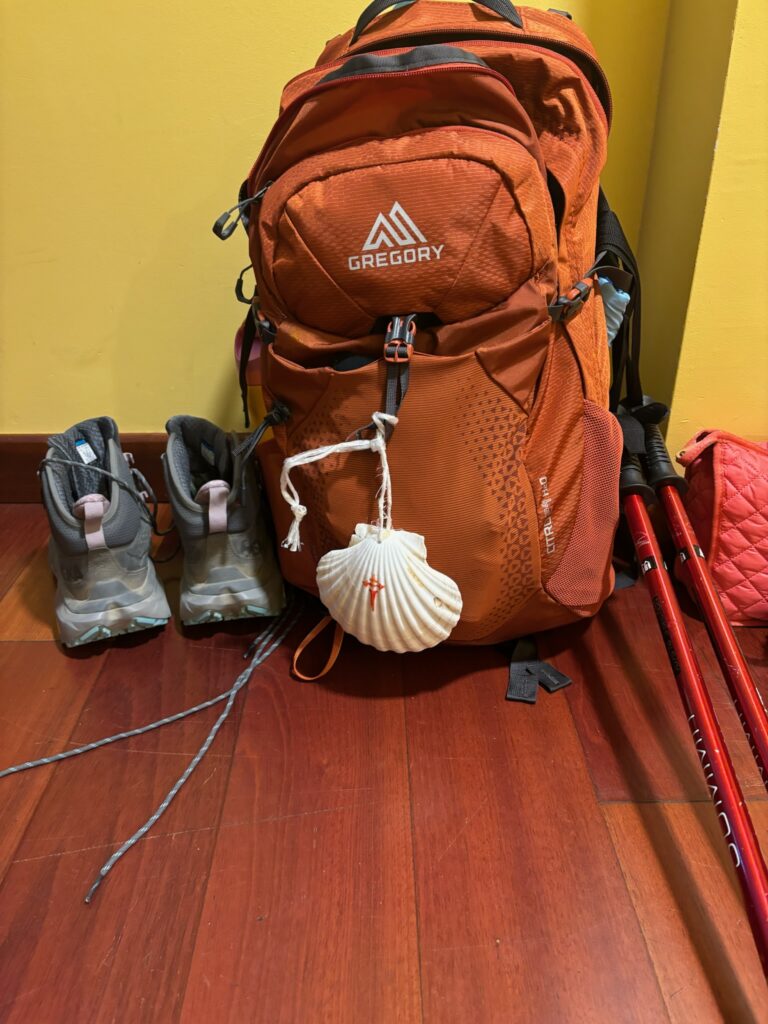
Q: Tell me about the food and drink along the Camino. Did you have to bring food/snacks with you? I assume you had to refill water constantly? Are there spots to eat along the Camino? If so, what type of dishes did they serve? Any favorite meals?
A: We brought some electrolytes, protein bars and trail mix with us, but honestly there was so much great food along the way that we hardly ate any of it! The food wasn’t just good – in many places it was excellent! For lunch, we usually had bocadillos (baguette with meat and/or cheese), though we did find a few lunch spots with delicious curry, soup, poke bowls and other dishes. For dinner, there was generally a variety of options to choose from, including Spanish, Italian, and a lot of seafood given the proximity to the ocean. Many of the menus typically include things like caprese salad, octopus, pastas and meat dishes. And of course, there are plenty of tapas places in the towns. Since the Spaniards eat dinner later, and most restaurants don’t open until 8 or 9pm, we usually stopped for tapas (and a beer or glass of wine) when we arrived at our destination, then showered, stretched and had dinner.
There were a few meals that stood out. One was La Puerta del Perdon in Villafranca del Bierzo, which offered a cozy atmosphere and a diverse menu with incredible service. Santiago de Compostela offers a variety of great dining options – our favorites there were Marie Miner and Fogar do Santiso.
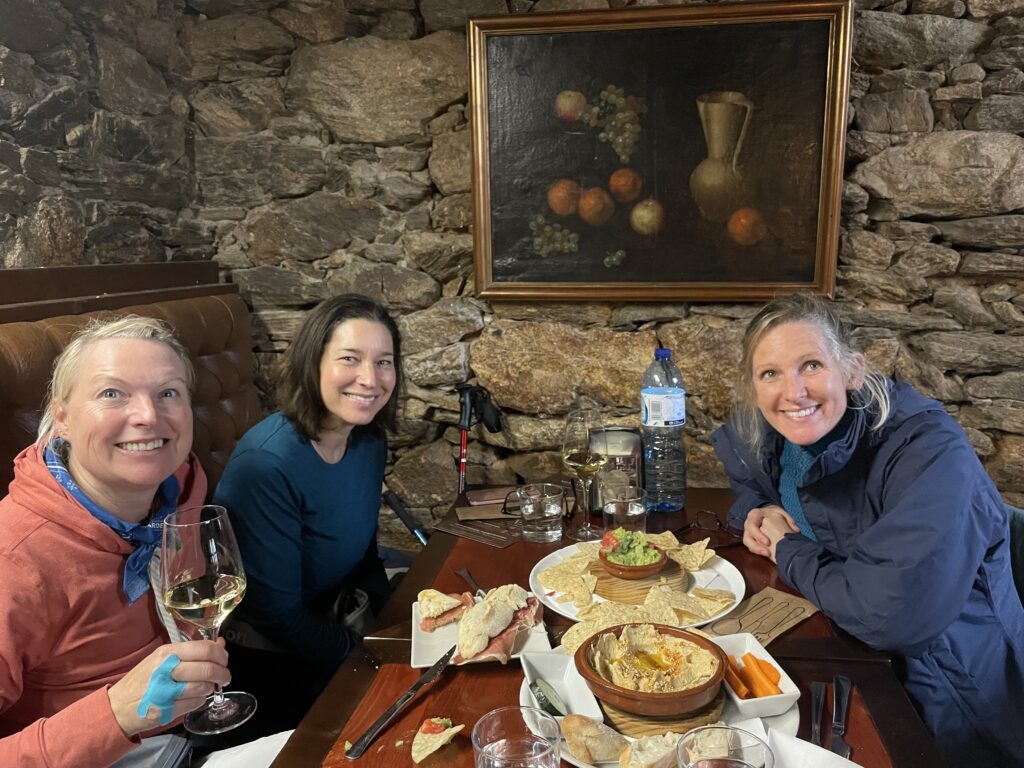
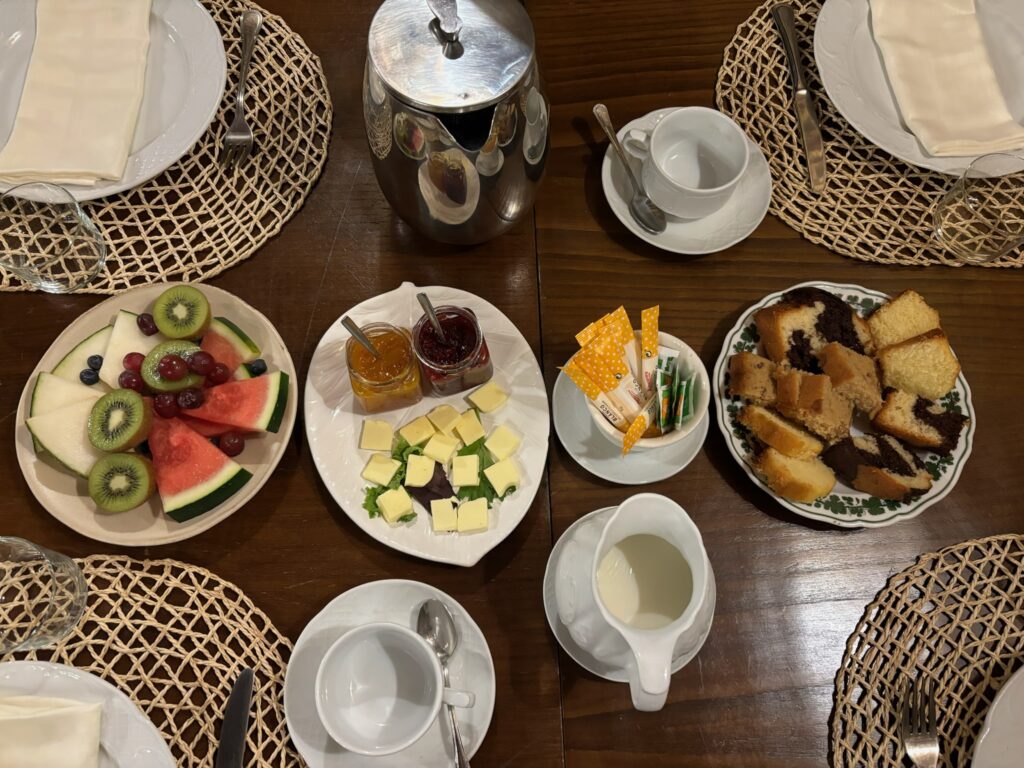
Q: What are your top 5 tips from someone who wants to hike the Camino?
1) Be prepared for rain, especially in Galicia. Use a good weather app to time your start/stop/finish times for the day in the case of rainy weather.
2) Be open to meeting new people. Connecting with other pilgrims on the Camino can be one of the most special parts of the experience.
3) Wear comfortable shoes that are broken in (we wore Hoka Stinson) and 2 pairs of socks (we liked the Injiji and Darn Tough brands).
4) If you go with other people, spend some time walking alone so you have more time and space for self-reflection.
5) If you go with others, be thoughtful about who those people are. There can be a lot of challenges along the way and not everything always goes as planned, and having a mindset of adventure and being ready for anything is key. We were fortunate that when we faced a challenge, everyone in our group laughed about it and kept things light. For us, everyone in our group having the same mindset and being able to approach things with a positive attitude made the experience all the more enjoyable!
Q: Any last thoughts or advice on hiking the Camino de Santiago?
A: If you do it, I would recommend hiking for at least a week or more if you can. We found the longer we did it, the more therapeutic it was. The combination of the physical challenge, being out in nature, and not having to think about anything other than putting one foot in front of the other and what tapas we were going to eat when we got into town created a sense of peace and calm that is hard to find in everyday life. With each day, our perspective shifted a little more, our dreams became more intense, and we felt a greater sense of accomplishment. We have all agreed that it was only our first Camino, and we look forward to many more in the future!
